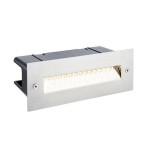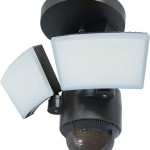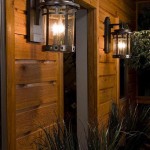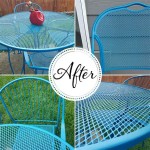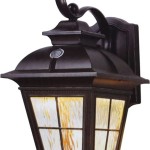```html
Outdoor Lighting Suitable For Coastal Areas
Coastal environments present unique challenges for outdoor lighting due to their proximity to saltwater, exposure to strong winds, and potential for extreme weather conditions. Selecting lighting fixtures specifically designed for these conditions is crucial for ensuring longevity, safety, and aesthetic appeal. This article will examine the key considerations for choosing outdoor lighting in coastal areas and highlight the materials, features, and technologies best suited to withstand the harsh marine environment.
Material Selection: Mitigating Corrosion
One of the most significant challenges in coastal lighting is corrosion. Saltwater is highly corrosive and can quickly degrade many common lighting materials. Therefore, choosing materials resistant to corrosion is paramount for ensuring the long lifespan and reliable performance of outdoor lighting fixtures.
Brass: Solid brass is an excellent choice for coastal environments. It is naturally resistant to corrosion and develops a desirable patina over time, adding to its aesthetic appeal. However, not all brass fixtures are created equal. Ensure the fixture is made from solid brass, not just brass-plated, as plating can wear away, exposing the underlying, less corrosion-resistant material.
Copper: Similar to brass, copper offers good corrosion resistance. It also develops a patina, which some find aesthetically pleasing. Like brass, it is important to ensure the fixture is made from solid copper and not just copper-plated to prevent corrosion issues.
Stainless Steel: Marine-grade stainless steel, specifically 316 stainless steel, offers exceptional corrosion resistance. This alloy contains molybdenum, which enhances its resistance to chloride corrosion, making it ideal for saltwater environments. Less expensive grades of stainless steel, such as 304, are more susceptible to rust in coastal areas and should be avoided.
Powder-Coated Aluminum: Aluminum is lightweight and naturally resistant to corrosion. However, it is typically finished with a powder coating to provide an extra layer of protection against the elements and enhance its aesthetic appeal. The quality of the powder coating is critical; it should be applied evenly and be specifically formulated for marine environments.
Composites: Certain composite materials, such as fiberglass-reinforced polyester, are non-corrosive and can withstand harsh weather conditions. These materials are often used for light poles and other structural components of outdoor lighting systems.
Avoid using materials that are highly susceptible to corrosion, such as standard steel or cast iron, unless they are heavily treated with protective coatings. Even with coatings, these materials may require frequent maintenance to prevent rust and degradation.
Design Considerations: Weather Resistance and Light Pollution
Beyond material selection, the design of outdoor lighting fixtures is crucial for coastal environments. Fixtures should be designed to withstand strong winds, heavy rain, and potential impacts from debris. Furthermore, it is essential to minimize light pollution to protect nocturnal wildlife and preserve the natural beauty of the coastal landscape.
Ingress Protection (IP) Rating: The IP rating indicates the level of protection a fixture offers against dust and water ingress. For coastal areas, a minimum IP rating of IP65 is recommended, meaning the fixture is protected against dust and low-pressure water jets. For areas directly exposed to waves or heavy rain, a higher IP rating, such as IP67 or IP68, is preferable. These ratings indicate protection against temporary or prolonged immersion in water, respectively.
Wind Resistance: Coastal areas are often subject to strong winds. Ensure that lighting fixtures are rated for wind resistance and securely mounted to prevent them from being damaged or dislodged during storms. Consider using fixtures with aerodynamic designs that minimize wind resistance.
Impact Resistance: Choose fixtures made from durable materials that can withstand impacts from flying debris, such as branches or rocks, during storms. Look for fixtures with a high impact resistance rating (IK rating).
Light Pollution Mitigation: Minimizing light pollution is crucial in coastal areas to protect marine ecosystems and preserve the natural night sky. Full cutoff fixtures, which direct light downward and prevent it from escaping upwards, are highly recommended. These fixtures direct light only where it is needed, reducing glare and light trespass. Shielding can also be added to existing fixtures to direct light downwards.
Color Temperature: Opt for warm-toned light sources (2700K to 3000K) to minimize disruption to nocturnal wildlife. Cooler color temperatures (e.g., 4000K or higher) can be more disruptive to natural ecosystems. Warm-toned light sources also tend to be less harsh and more visually appealing.
Motion Sensors and Timers: Consider using motion sensors and timers to control outdoor lighting. This can reduce energy consumption and minimize light pollution by only illuminating areas when they are needed. Motion sensors can also enhance security by deterring potential intruders.
Lighting Technologies: Energy Efficiency and Longevity
The choice of lighting technology impacts energy consumption, lifespan, and light quality. In coastal environments, choosing energy-efficient and long-lasting light sources is particularly important to minimize maintenance and reduce the overall cost of ownership.
LED Lighting: Light-emitting diodes (LEDs) are the dominant technology in outdoor lighting due to their energy efficiency, long lifespan, and superior light quality. LEDs consume significantly less energy than traditional light sources, such as incandescent or halogen lamps, and can last for tens of thousands of hours. This reduces energy bills and minimizes the need for frequent replacements. LEDs are also available in a wide range of color temperatures and light outputs, allowing for customization to suit specific lighting needs.
Photocells: Photocells automatically turn lights on at dusk and off at dawn, ensuring that lights are only on when needed. This can save energy and reduce the need for manual operation.
Smart Lighting Systems: Smart lighting systems offer advanced control over outdoor lighting. These systems can be controlled remotely via a smartphone or tablet and can be programmed to adjust light levels based on time of day, motion detection, or other factors. Smart lighting systems can also provide valuable data on energy consumption and lighting performance.
Solar Lighting: In some applications, solar lighting can be a viable option. Solar lights are self-contained and do not require connection to the electrical grid, making them ideal for remote locations or areas where it would be difficult to run wiring. However, the performance of solar lights can be affected by weather conditions, and they may not be suitable for all applications.
Proper installation is crucial for ensuring the long-term performance of outdoor lighting in coastal areas. Ensure that all electrical connections are sealed properly to prevent corrosion and that wiring is protected from damage. Regularly inspect lighting fixtures for signs of corrosion or damage and address any issues promptly to prevent further deterioration.
By carefully considering material selection, design features, and lighting technology, it is possible to create outdoor lighting systems that are both functional and aesthetically pleasing while withstanding the harsh conditions of coastal environments.
```
Coastal Lighting With Marine Grade Finishes Flip The Switch

How To Choose Coastal Outdoor Lighting Fixtures Rc

Exterior Lighting Astro

How To Choose Coastal Outdoor Lighting Fixtures Rc

Outdoor Lighting Coastal Locations Wall Lights In Brass

Outdoor Lighting Coastal Locations Wall Lights In Brass

How To Choose Outdoor Lighting For Coastal Environments

Coastal Lighting With Marine Grade Finishes Flip The Switch

4 Little Known Secrets About Outdoor Coastal Lighting Agc

Outdoor Path Lights Beach House Lighting
Related Posts

